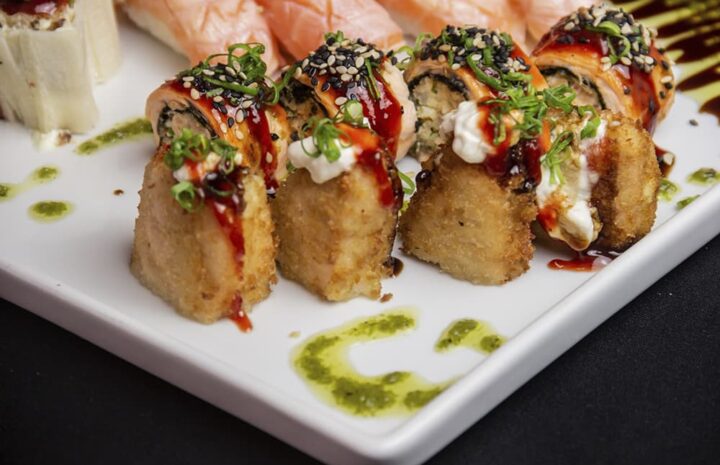Many people are attracted to exotic food. There are many variants of national cuisine. Oriental cuisine and Japanese cuisine in particular are invariably very popular. You can take advantage of this by organizing the corresponding business. But how to open a Japanese restaurant with quite a lot of competition.
Before answering the question of how to open a Japanese restaurant, you need to think about how you can attract potential customers against the background of similar establishments of Eastern themes?
It could be something original, such as a combination of several national cuisines or related events: theme parties, disco-bar. After all, Japan is not only national cuisine but also a special youth subculture.
First of all a place has to attract by its unusual interior. Classic Japanese minimalism used in all such restaurants, sushi bars and other catering establishments, already sort of bored. You can take up, for example, the Japanese anime, decorating the interior and uniforms of staff in the appropriate way.
In addition to connoisseurs of Japanese anime, the creative design will attract people who drop in out of curiosity, and if they like the cuisine and service, they may become regular customers later on.
Japanese cuisine is characterized by the simplicity of cooking with a small number of products. Due to the geographical location, seafood is the main component of the Japanese diet. In Japan, rice is present in almost every dish. The Japanese tradition is to serve several dishes in small portions at once and to serve them with special attention. The fish for sushi and rolls is used only fresh, not subjected to thermal processing and it must be accompanied by ginger and wasabi, the Japanese prefer to wash down the food with green tea or sake. Japan appreciates the natural taste of the product, so different ingredients are used in the menu depending on the season.
Which dishes should be on the menu and which should be discarded
Of course, Japanese cuisine is not only sushi and rolls, it also includes first and second courses, salads, pastries, various sweets, sauces and drinks. In this case rice remains the main ingredient, for example, norimaki cakes are made from rice dough, and even noodles are present in the Japanese diet, but not quite ordinary, noodles are also made from rice. For business profitability is enough to prepare delicious sushi and rolls, salads and soups, but the baking and other dishes that do not match the concept of the bar should be abandoned in order to avoid the purchase of additional equipment.
How to choose a room for a sushi bar
In order for the restaurant to be popular and profitable, it is important to choose the right space, taking into account these recommendations:
There should be a large passability of people (the more the better). It is necessary to carefully study the districts of the city, as well as observe where the demand for this product.
The best options are facilities near entertainment venues. This option will not only give an opportunity to attract visitors, but also to earn money for the provision of additional services, which you can think about.
Do not choose a place where there are already promoted institutions with a concept similar to yours. This mistake can be cancerous in the construction of business and make bankruptcy in the shortest possible time.
Japanese restaurant equipment
- Sushi cases. Fish products spoil very quickly, but storing them in freezers is undesirable. They are also prone to “getting stale”. Therefore, you will need hermetically sealed refrigerated display cases of foreign production – sushi-cases.
- Refrigeration units. It is desirable to purchase foreign refrigeration equipment.
- Thermoses for storing cooked rice.
- Professional rice cookers.
- Knives, cutting boards and utensils should be specially designed for sushi. Conventional knives rust and blunt quickly and can ruin the taste of the finished product. Boards quickly crumble, so that wooden “splinters” begin to get into the rolls and sushi.
How to surprise a customer in a sushi bar
First of all, it is a strict control over the quality of food. Poor quality control causes the entire industry to lose customers. If a consumer has a bad meal in a sushi bar, he is irrevocably lost to all Japanese restaurants: sushi is bad! The main methods of control: spontaneous tastings, weighing dishes.
Secondly, a high level of customer service. Many restaurants use an individual approach – one needs to offer a new dish, the second – to present beautiful chopsticks, the third – to give a discount card.
And finally, innovativeness. It is necessary to constantly surprise the customer with new dishes. Owners of successful restaurants regularly go abroad, visit Oriental restaurants and borrow novelties. Experienced restaurateurs recommend changing about 20% of the items on the menu every season.
